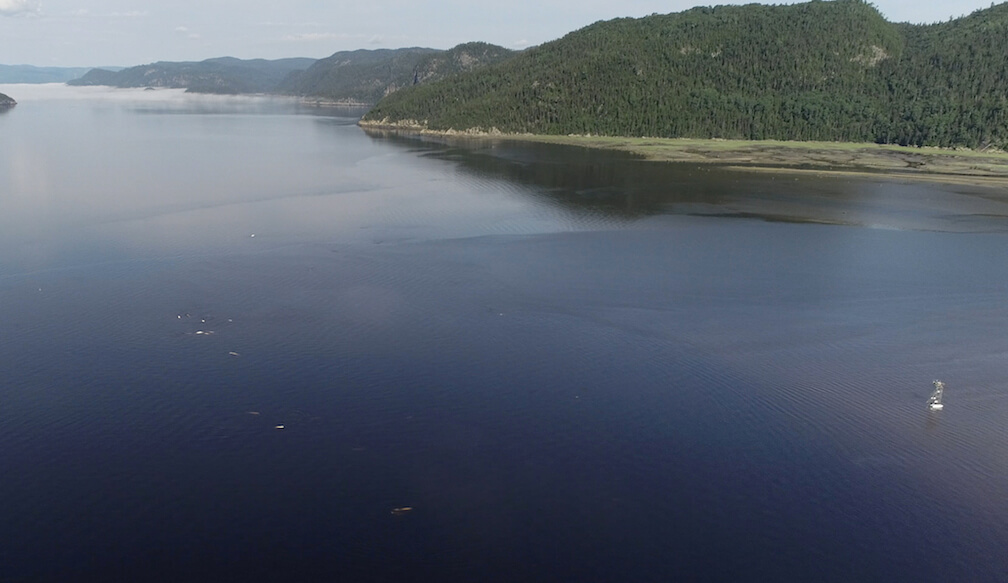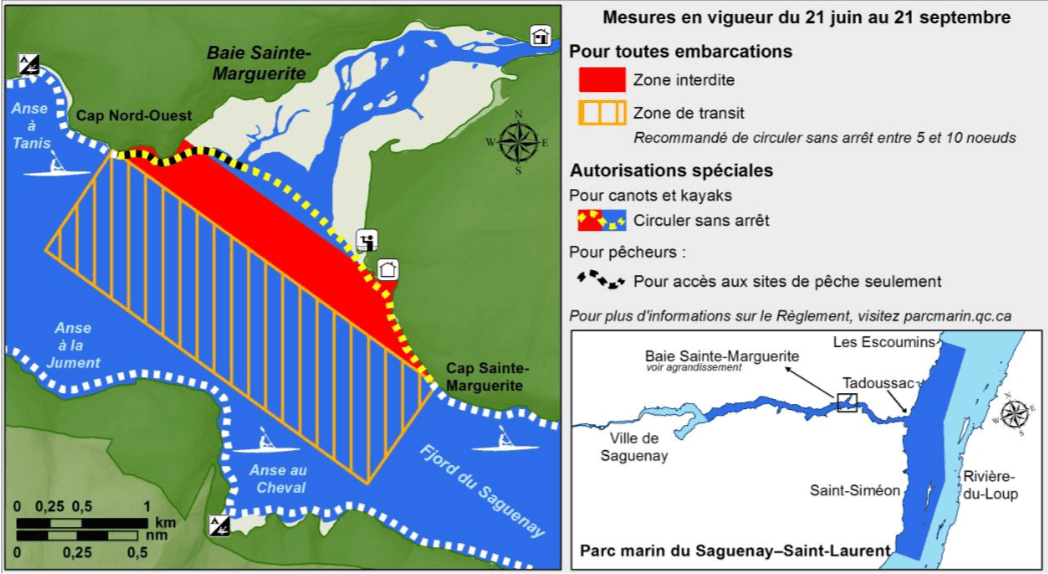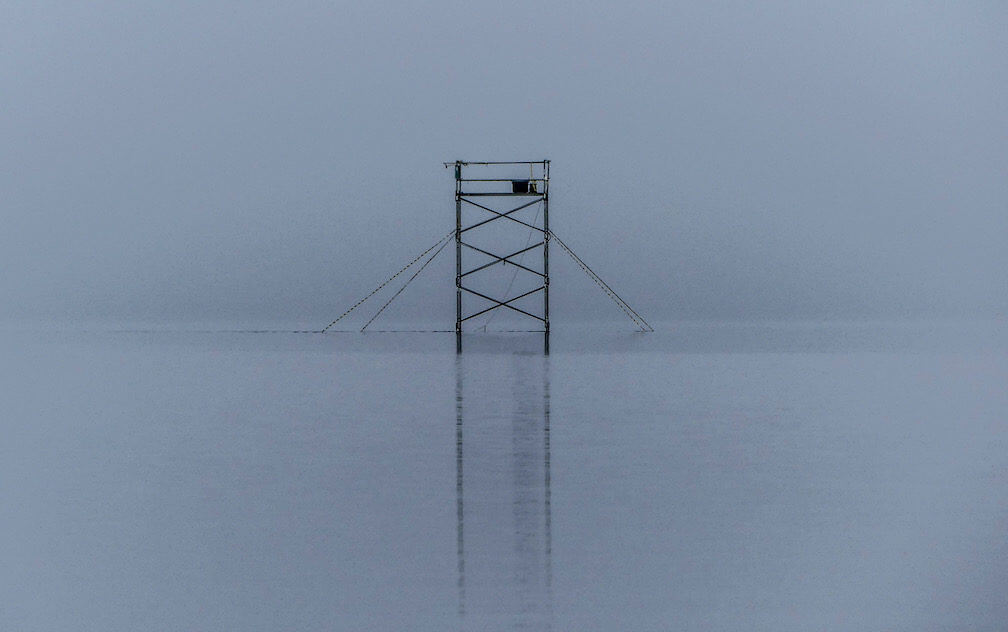By Valeria Vergara and Marie-Ana Mikus (guest researchers from Ocean Wise Conservation Association)
Time flies on the beluga research tower in Baie Sainte-Marguerite in the Saguenay-St. Lawrence Marine Park. It is hard to believe we are already in the middle of our second season! With more than 50 drone flights, 3 weeks of nearly continuous recordings, and belugas in the bay almost every day, we can definitely say this is proving to be a productive season. We’re a team of four this year, which makes the arduous journey to the research tower and setup and dismantling of our gear every day a little more efficient. The 2×3 m platform is as small as it sounds, so each of us tries to keep to a little corner, making sure to warn the others if there will be any movement at all towards another person’s “turf”.
Each of us has a task. Jaclyn flies the drone over groups with calves or yearlings, essential for her master project on cooperative care of young, directed by GREMM and Memorial University. Her study is highly compatible with our mother-calf communication study, which looks at how noise may disturb the important acoustic bond between mothers and their newborn calves (a collaboration between GREMM and Ocean Wise). Marie-Ana and I take care of the hydrophones and also fly the drone (yes, we are all certified drone pilots!), but focusing on the entire herd instead of on focal groups. Flying high, we obtain an accurate estimate of herd composition, the total number of individuals visiting the bay every day, and we count mother-calf separations and reunions, pairing this information with our acoustic recordings. We keep a close tally on the number of vessels, and their types and distances from the tower (and the whales). Josephine is responsible for photo-ID work, taking photos of every individual that swims near the tower, an important aspect of both projects.
The sounds picked up by one of our highly sensitive hydrophones blast through the speakers of our field computer every minute of our stay at the tower. When we hear beluga sounds, it’s a wonderful feeling. Just this afternoon, we were reflecting on how familiar these sounds are to us by now. We can understand the mood – such as whether some nearby belugas are fighting or being playful, we can perceive if we have a group with small calves near the hydrophone (lots of contact calls!) or a group of males (a very different, male-like series of sounds that we’ve gotten very used to!). But we are still very far from deciphering the exact content of their incredibly diverse signals. Marie-Ana compared this to being immersed in a foreign language for a while, when the sounds become familiar and one begins to get the gist of them but cannot yet understand the language.
When what blasts through the speakers is vessel noise, however, the feeling is not very pleasant. And this, unfortunately, takes place a large part of the day. If this gets tiring for us humans on the research tower, we can only imagine what it must be like for such highly acoustic creatures such as belugas! The good news: this year there are new beluga protection measures in Baie Sainte-Marguerite that establish this area as an exclusion zone. We are very curious to compare this year’s recordings to last year’s, to see the extent to which the regulations have made a difference in the acoustic quality of the soundscape in this important area. Judging from the high amount of underwater noise in the area this year, we have the impression that the difference will not be noticeable just yet, as few people are aware of the regulations. It will take time, education, and enforcement to begin to see the difference, but this is undoubtedly a much-needed first step! Acoustic sanctuaries are vital to sound-centred species, and our beloved St-Lawrence belugas need all the help they can get.









